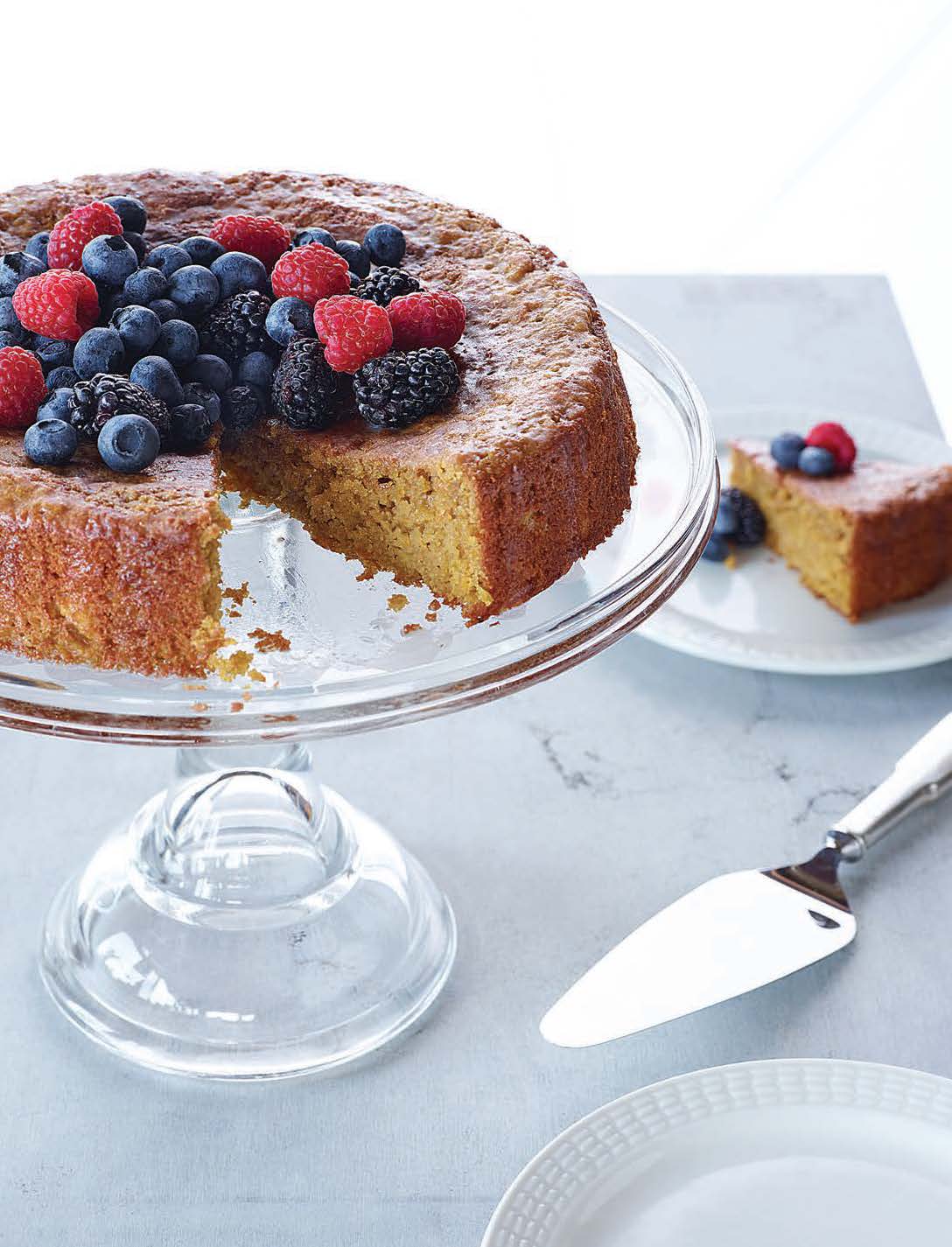This cake makes a persuasive case for baking with almond flour, whether you are gluten-free or not. Olive oil adds peppery spice and amplifies flavors like orange and lemon better than butter does. The batter begins with a unique technique—you’ll boil a whole orange and a lemon to puree into a marmalade-like spread. This gives the cake its citrusy intensity and helps keep it moist for days. Using the whole fruit not only studs the cake with chewy bits of orange and lemon, it contributes a good dose of fiber and beneficial flavonoids from the peel.
You can use almond flour or meal interchangeably here with good results, with the meal resulting in a more rustic, nubby texture. Toasted and ground whole almonds work, too. To reduce the amount of sugar, omit the glaze.
Glazed Citrus, Almond, And Olive Oil Cake
 12
12
Ingredients
- ⅔ cup (150 ml) fruity olive oil, plus more for the pan and the glaze
- 1 small seedless orange (6 ounces/170 g), such as navel or Cara Cara
- 1 small lemon (5 ounces/ 140 g), such as a Meyer lemon
- 1½ cups (170 g) almond flour or meal
- 1 cup (115 g) oat or quinoa flour
- 1 tablespoon baking powder
- ½ teaspoon kosher salt
- 4 eggs, at room temperature
- 1 cup (170 g) coconut palm sugar
- ¼ cup (25 g) confectioners’ sugar
- 2 teaspoons warm water
- Fresh berries, for serving (optional)
Instructions
- 1 Preheat the oven to 350°F (180°C). Brush a nonstick 9-inch (23 cm) springform pan with oil.
- 2 Place the orange and lemon in a saucepan and cover with water. Bring to a boil, then reduce to a simmer. Cook until you can easily insert the tip of a knife into the peel easily, about 30 minutes. Drain and set aside until cool enough to handle.
- 3 Combine the almond flour, oat flour, baking powder, and salt in a medium bowl; set aside.
- 4 Cut the lemon and orange in half through the equator. Scoop out the pulp and seeds from the lemon and discard, then scoop out just the seeds from the orange, keeping the pulp. Place the lemon rind and the deseeded orange in the bowl of a food processor. Pulse until it resembles a thick marmalade. Scrape into a measuring cup; you should have about 1 cup (250 g).
- 5 Combine the eggs and coconut sugar in the food processor and process until frothy, about 1 minute. With the machine running, pour the oil through the top of the feed tube and process for another 1 minute until smooth. Scrape the egg mixture into the flour mixture and combine by hand until no streaks of flour remain. Fold in the marmalade until evenly distributed.
- 6 Pour the batter into the prepared springform pan and bake for 40 to 50 minutes, until the edges pull away from the sides and a tester inserted into the center comes out clean. Set aside to cool completely.
- 7 To make the glaze, stir together the confectioners’ sugar and 2 teaspoons of the warm water until no lumps remain. Add up to 2 teaspoons oil until smooth and glossy.
- 8 Run a flexible metal spatula or a knife between the edge of the pan and the cake, then release the sides. Pour the glaze over top and spread to the edges in an even layer with the back of a spoon or an offset spatula.
- 9 When the glaze has set, cut the cake into wedges and serve with fresh berries (if using).
- 10 To store, cover tightly and refrigerate for up to 5 days. Or wrap each wedge individually and store in the freezer for up to 3 months.




